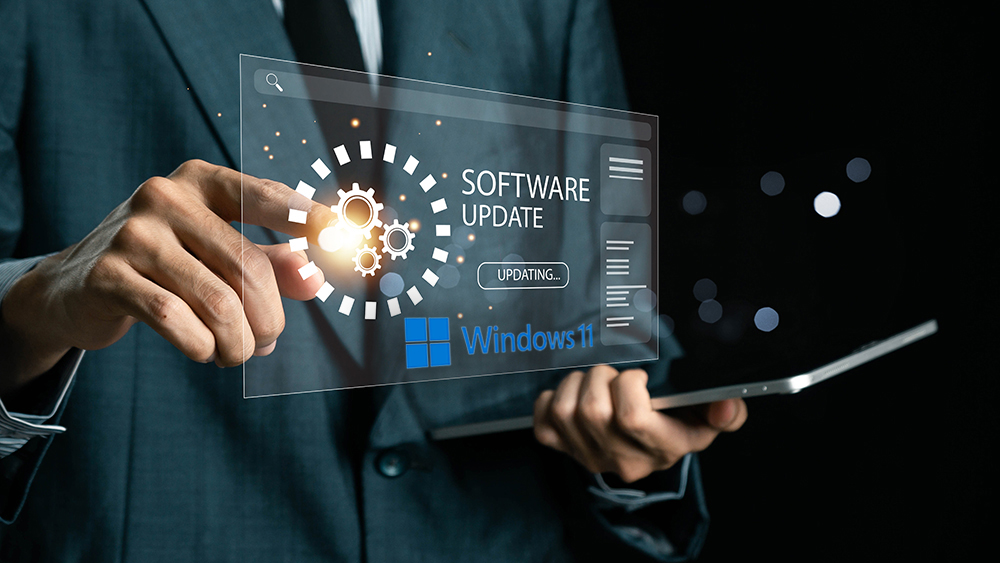Microsoft Windows 10 is due to be retired this year and is being replaced by Windows 11.
With previous Microsoft updates it has usually been a relatively seamless process, because Microsoft has continued to support older versions. However, as announced back in 2021, Microsoft will be removing support for Windows 10 from 14 October 2025.
This means schools, academies and education trusts need to start preparing for the transition to Windows 11 this summer. By not updating in time, they could be left open to security risks and performance issues.
At EasiPC, we are already aware of these issues and understand that managing IT transitions within schools can be challenging. That’s why we’re here to ensure your move to Windows 11 is as smooth and stress-free as possible. In this article, we will provide you with an outline of the main differences between Windows 10 and Windows 11, explain why upgrading is essential, and how EasiPC can support your school through the process.
Why the Transition to Windows 11 is So Impactful
One of the biggest challenges with upgrading to Windows 11 is that many older devices, which are not running the latest Windows 10 Version 2004 or later, may not be compatible and will struggle to meet the new requirements which could have an adverse impact throughout the school, on teaching, administration and learning.
The main hardware requirements for Windows 11 include:
- Compatible Processor Power, Memory and Storage: At the heart of the hardware, Windows 11 needs plenty of operating power, memory and storage. In terms of processor speed, it requires at least 1GHz or faster, 4GB of RAM (Random Access Memory) and storage of 64GB or larger to enable the hardware to keep up to date.
- Security Chip or Trusted Platform Module – TPM 2.0: Windows 11 requires a security chip that is a critical feature. Many older machines don’t have this chip.
- Modern Start-up Security: The upgrade uses improved methods to ensure a secure start-up, which older devices may not support.
- Newer Processors: Windows 11 is designed for the latest processors. If devices have older CPUs, they might not run Windows 11 smoothly.
Because of these hardware needs, it’s important for schools to review their current equipment well in advance. EasiPC can help by checking your existing systems and advising on cost-effective upgrades or replacements, so schools and trusts are fully prepared for Windows 11 and are able to continue to operate smoothly.
Main Differences Between Windows 10 and Windows 11
Windows 11 isn’t just designed to be a simple facelift. Windows 11 offers enhanced performance, added security, and features that are designed to support modern teaching and learning environments. Here are some of the biggest changes:
- Improved Performance & Efficiency – Windows 11 is designed to be faster, improve battery life, and enhance overall efficiency, making sure that devices run smoother and quicker.
- Enhanced Security Features – With built-in security tools, like TPM 2.0, Windows 11 will provide greater protection against cyber threats.
- Updated User Interface – The user interface is set to be cleaner and more modern-looking to make navigation easier for both students and teachers.
- Better Support for Hybrid Learning – There will be new features such as ‘Snap Layouts’, which helps to organise open windows on the desktop, and ‘Virtual Desktops’, which will improve multitasking and team working, by accessing work and resources remotely from any device with an internet connection.
- Greater Compatibility with Modern Apps – Windows 11 is designed to support the latest educational tools and applications, ensuring seamless connection with cloud-based learning resources.
Why Schools Must Plan for the Transition Now
While October 2025 might seem a while off, waiting too long to upgrade could lead to several problems:
- Security Risks – Once the support for Windows 10 ends, Microsoft won’t be releasing further security updates or patches, leaving schools even more vulnerable to cyber-attacks and breaches, at a time when cyber attacks are on the rise in schools.
- Hardware and Software Compatibility Issues – Many new applications and education software updates will be designed specifically for Windows 11, meaning older devices may struggle to keep up, and that could create problems throughout the entire school.
- IT Disruptions – Upgrading at the last minute can cause disruptions to school operations during term time; so it really is vital to plan ahead for a smooth transition.
How EasiPC Can Help
EasiPC specialises in IT solutions for the education sector, and we are ready to assist schools in making the switch to Windows 11 as seamlessly as possible. Our services include:
- Comprehensive IT Audits – We assess your current infrastructure to determine which devices need upgrading or replacing.
- Seamless Implementation – Our team of experts can manage the full transition, making sure any disruption to teaching or learning is minimised or, better, avoided, by working around time-tables wherever possible.
- Training & Support – We provide training for staff and IT teams to help them get the most out of Windows 11.
- Ongoing Maintenance & Security – Our support doesn’t end with the upgrade; we offer continued IT support, either on-site or through our flexible remote service desk, to ensure your systems remain secure and efficient.
Your Next Step to Securing Your School’s IT Future
We strongly advise that you don’t wait until the last minute. Start planning your upgrade to Windows 11 today. Get in touch with EasiPC to discuss how we can help your school, academy, or trust transition smoothly and securely.
Contact us today to schedule a consultation!
By taking action now, you can ensure a safe, secure IT environment for your students and staff.

